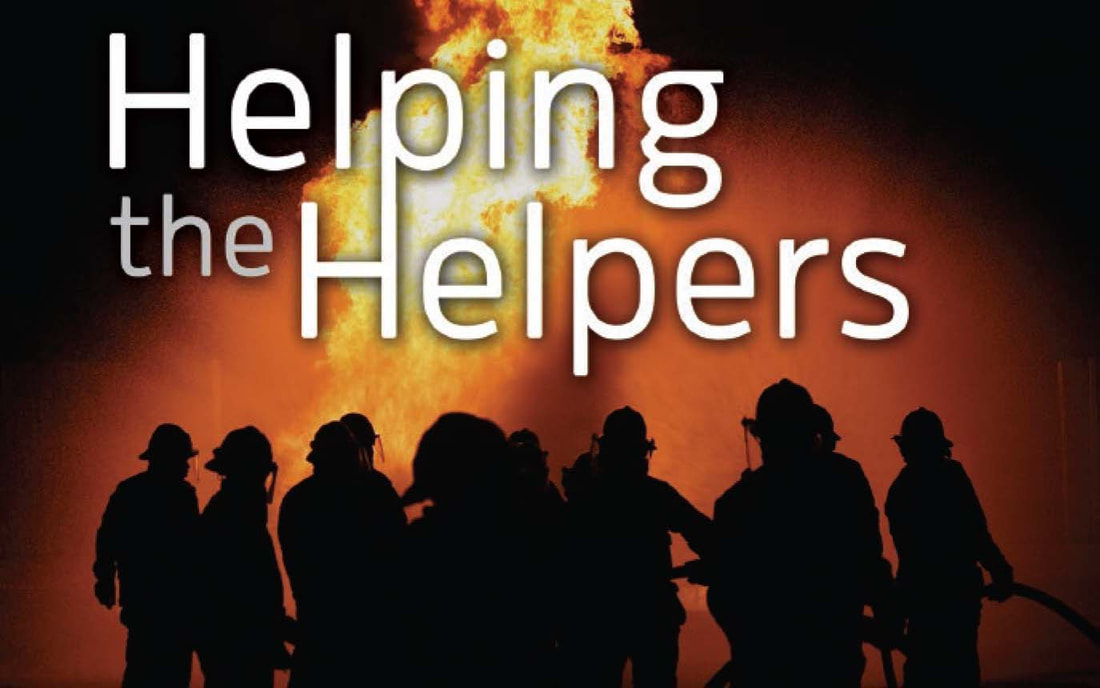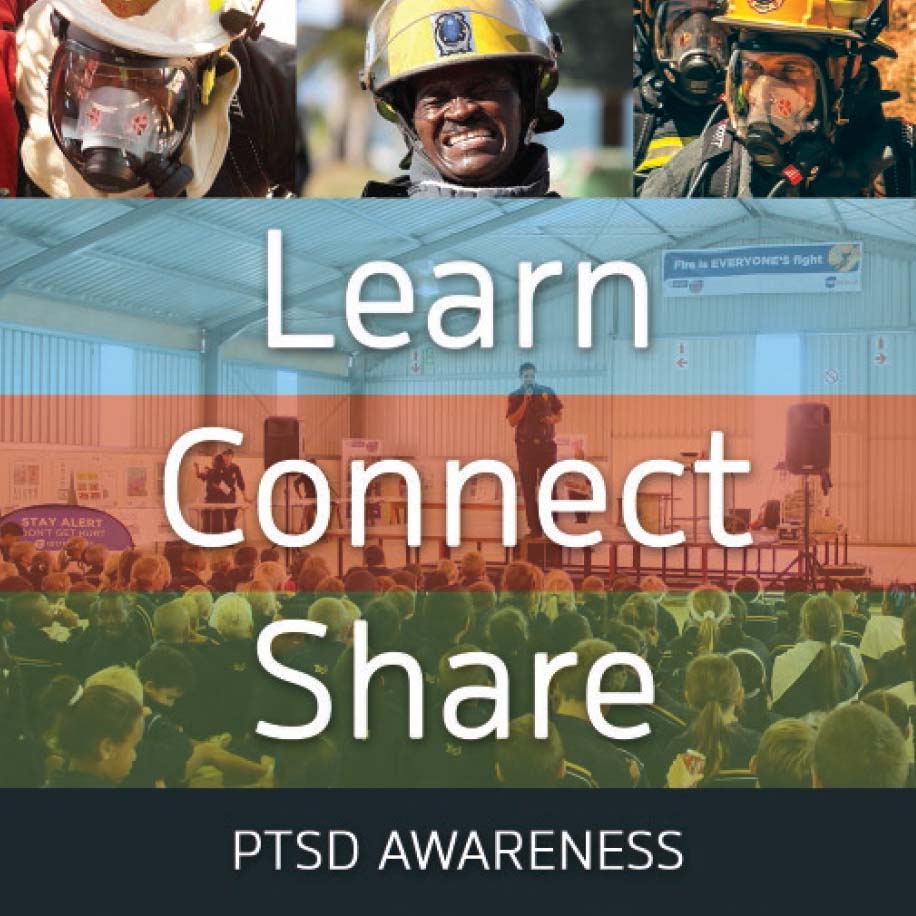- Home
- Magazines
-
Newsletters
- 19 July 2024
- 12 July 2024
- 5 July 2024
- 28 June 2024
- 14 June 2024
- 7 June 2024
- 31 May 2024
- 24 May 2024
- 17 May 2024
- 10 May 2024
- 3 May 2024
- 26 April 2024
- 19 April 2024
- 12 April 2024
- 22 March 2024
- 15 March 2024
- 8 March 2024
- 1 March 2024
- 23 February 2024
- 16 February 2024
- 9 February 2024
- 26 January 2024
- 19 January 2024
- 12 January 2024
- 22 December 2023
- 1 December 2023
- 24 November 2023
- 10 November 2023
- 3 November 2023
- 27 October 2023
- 20 October 2023
- 13 October 2023
- 6 October 2023
- 29 September 2023
- 22 September 2023
- 15 September 2023
- 8 September 2023
- 25 August 2023
- 18 August 2023
- 11 August 2023
- 4 August 2023
- 28 July 2023
- 21 July 2023
- 14 July 2023
- 7 July 2023
- 30 June 2023
- 23 June 2023
- 15 June 2023
- 2 June 2023
- 26 May 2023
- 19 May 2023
- 12 May 2023
- 5 May 2023
- 28 April 2023
- 21 April 2023
- 14 April 2023
- 6 April 2023
- 31 March 2023
- 24 March 2023
- 17 March 2023
- 10 March 2023
- 3 March 2023
- 24 February 2023
- 17 February 2023
- 10 February 2023
- 3 February 2023
- 27 January 2023
- 13 January 2023
- 22 December 2022
- 15 December 2022
- 9 December 2022
- 2 December 2022
- 25 November 2022
- 18 November 2022
- 11 November 2022
- 4 November 2022
- Advertising
- Subscribe
- Articles
-
Galleries
- AOSH Firexpo 2024
- Midvaal Fit to Fight Fire 2024
- WoF KNP 2023 Gallery
- TFA 2023 Gallery
- DMISA Conference 2023
- ETS 2023 Gallery
- Drager Fire Combat and Rescue Challenge 2023
- AOSH Firexpo 2023
- Midvaal Fit to Fight Fire
- WC IFFD 2023
- NMU 13th Fire Management Symposium 2022
- JOIFF Africa Conference 2022
- ETS 2022 Gallery
- TFA 2022 Gallery
- IFFD 2018
- SAESI
- TFA
- WRC 2018
- WRC 2019
- A-OSH/Securex
- IFE AGM 2019
- ETS Ind Fire Comp Nov 2019
- ETS Challenge 2021
- Drager launch
- Drager Fire Combat and Rescue Challenge 2022
- TFA
- Contact
- Home
- Magazines
-
Newsletters
- 19 July 2024
- 12 July 2024
- 5 July 2024
- 28 June 2024
- 14 June 2024
- 7 June 2024
- 31 May 2024
- 24 May 2024
- 17 May 2024
- 10 May 2024
- 3 May 2024
- 26 April 2024
- 19 April 2024
- 12 April 2024
- 22 March 2024
- 15 March 2024
- 8 March 2024
- 1 March 2024
- 23 February 2024
- 16 February 2024
- 9 February 2024
- 26 January 2024
- 19 January 2024
- 12 January 2024
- 22 December 2023
- 1 December 2023
- 24 November 2023
- 10 November 2023
- 3 November 2023
- 27 October 2023
- 20 October 2023
- 13 October 2023
- 6 October 2023
- 29 September 2023
- 22 September 2023
- 15 September 2023
- 8 September 2023
- 25 August 2023
- 18 August 2023
- 11 August 2023
- 4 August 2023
- 28 July 2023
- 21 July 2023
- 14 July 2023
- 7 July 2023
- 30 June 2023
- 23 June 2023
- 15 June 2023
- 2 June 2023
- 26 May 2023
- 19 May 2023
- 12 May 2023
- 5 May 2023
- 28 April 2023
- 21 April 2023
- 14 April 2023
- 6 April 2023
- 31 March 2023
- 24 March 2023
- 17 March 2023
- 10 March 2023
- 3 March 2023
- 24 February 2023
- 17 February 2023
- 10 February 2023
- 3 February 2023
- 27 January 2023
- 13 January 2023
- 22 December 2022
- 15 December 2022
- 9 December 2022
- 2 December 2022
- 25 November 2022
- 18 November 2022
- 11 November 2022
- 4 November 2022
- Advertising
- Subscribe
- Articles
-
Galleries
- AOSH Firexpo 2024
- Midvaal Fit to Fight Fire 2024
- WoF KNP 2023 Gallery
- TFA 2023 Gallery
- DMISA Conference 2023
- ETS 2023 Gallery
- Drager Fire Combat and Rescue Challenge 2023
- AOSH Firexpo 2023
- Midvaal Fit to Fight Fire
- WC IFFD 2023
- NMU 13th Fire Management Symposium 2022
- JOIFF Africa Conference 2022
- ETS 2022 Gallery
- TFA 2022 Gallery
- IFFD 2018
- SAESI
- TFA
- WRC 2018
- WRC 2019
- A-OSH/Securex
- IFE AGM 2019
- ETS Ind Fire Comp Nov 2019
- ETS Challenge 2021
- Drager launch
- Drager Fire Combat and Rescue Challenge 2022
- TFA
- Contact
|
19 May 2023
|
Featured FRI Magazine article: Post-traumatic stress disorder: How is it treated? (Vol 4 No 2)
https://www.frimedia.org/uploads/1/2/2/7/122743954/ptsd_vol4no2.pdf
https://www.frimedia.org/uploads/1/2/2/7/122743954/fri_vol_4_no_2.pdf
This week’s featured Fire and Rescue International magazine article is: Post-traumatic stress disorder: How is it treated? by Mike Webber, counselling psychologist. We will be sharing some technical articles from Fire and Rescue International magazine on a weekly basis with our readers to assist in technology transfer. This will hopefully create an increased awareness, providing you with hands-on advice and guidance. All our magazines are available free of charge in PDF format on our website and online at ISSUU. We also provide all technical articles as a free download in our article archive on our website.
Post-traumatic stress disorder: How is it treated?
By Mike Webber, counselling psychologist
In this second part of a series on post-traumatic stress disorder (PTSD), we examine the treatment of PTSD and acute stress disorder (ASD).
Firstly, when somebody is exposed to a traumatic incident, DO NOT RUSH IN AND OFFER CRITICAL INCIDENT STRESS DEBRIEFING (CISD) OR TRAUMA DEBRIEFING!
Unfortunately, an entire little industry has grown around CISD and trauma debriefing that includes well-meaning (but grossly misinformed) counsellors, non-governmental organisations (NGOs), employee assistance programme (EAP) service providers, chaplains and community based organisations. Up to 90 percent of people exposed to an exceptionally traumatic event will not develop PTSD or ASD. In the fire and emergency services that figure, may, because of their training and desensitisation through repeated exposure to emergency incidents, be even as high as 95 percent for service members.
Being upset or emotional after an unsettling incident is not PTSD or ASD. It’s a normal human response to trauma and tragedy. Immediate post-incident counselling, critical incident stress debriefing (CISD) or trauma debriefing does not help and can be even damaging and dangerous.
A meta-analysis of seven research projects on CISD and non-CISD debriefing published in the Lancet in 2002 concluded that these interventions do not improve natural recovery from psychological trauma. A further Cochrane Review that included a meta-analysis of 15 studies on trauma debriefing concluded that there is no evidence that individual psychological trauma debriefing is in any way useful in the prevention of PTSD or ASD. The study further recommended that compulsory debriefing of trauma victims should cease.
An article published in the British Journal of Psychiatry indicated that psychological debriefing is a waste of time. Some studies have even concluded that post-trauma debriefing can be harmful and dangerous. An 18 month study of burns patients at the Cardiff burns unit concluded that patients that had undergone post-incident debriefing showed higher rates of PTSD than patients that had not. A persistent adverse effect of trauma debriefing was also noted in a study of motor vehicle collision victims in Oxford.
So what should be done?
Do not debrief. Probing, questioning and encouraging staff to describe the details of the incident only re-traumatises an already traumatised brain. What is useful is psychological first aid. Psychological first aid is defined by the World Health Organisation as: “Humane, supportive response to a fellow human being who is suffering and who may need support. It entails basic, non-intrusive pragmatic care with a focus on listening but not forcing talk, assessing needs and concerns, ensuring that basic needs are met, encouraging social support from significant others and protecting from further harm.”
Allow colleagues to talk amongst themselves. Make it okay for staff to freely express their feelings. It’s not weakness, emasculating or being unfit for emergency services work to feel emotionally disturbed or upset by gruesome incidents, incidents involving children or multiple ‘dead on arrivals’ (DOAs). It’s okay (and even necessary) to suppress feelings whilst at work at an incident but once the action is over its okay, no, not just okay, it’s important to reconnect with feelings. It’s grossly unhealthy to persistently suppress feelings. They don’t go away. They just fade into the unconscious to emerge later in other ways. Do not bottle it up. The healing process from unsettling incidents starts in the vehicle’s cab en route back to station from the incident. It’s peer debriefing. Colleagues supporting colleagues.
This type of peer support happens spontaneously in most emergency services but it can also be structured in a peer support programme. One model for such peer debriefing is the Trauma Risk Debriefing Programme (TRiM) that was developed by the British military that is applied in several British police services. This comprises a common sense peer-based approach to managing trauma and the risk of PTSD. In this model trained TRiM counsellors (trained emergency services personnel, colleagues) offer, care, comfort and support to assist personnel in settling their emotions. Psychologists would call this ‘containment’. The TRiM counsellor creates a safe space in which the staff is given ‘permission’ to experience and express their emotions without fear of being judged for it. They’re also trained to be on the lookout for PTSD/ASD symptoms that may warrant a referral to a Health Professions Council of South Africa (HPCSA) registered counsellor or psychologist for counselling or therapy. They would also brief the staff on PTSD symptoms to be on the lookout for (psychoeducation), treatment options for PTSD and encourage them to seek help rather than hide or run from the symptoms.
Following that, DO NOTHING further at that stage. As mentioned further above, most personnel will not develop PTSD or ASD. A process of watchful waiting is then adopted to monitor staff and observe for the potential onset of PTSD symptoms. This watchful waiting is based on sound scientific evidence and is advocated as ‘best practice’ by the World Health Organisation, the National Institute for Clinical Excellence (NICE) treatment guideline No 26 The Management of PTSD in Adults and Children in Primary and Secondary Care, the Australian Guidelines for the Treatment of Adults with Acute Stress Disorder and Posttraumatic Stress Disorder, which even has a specific section for fire services and the United States Veteran’s Administration treatment guidelines.
Should a staff member start experiencing symptoms of PTSD as described in the first part of this series of articles, then only is it time to start treatment. But the right treatment. Self medicating with alcohol does not work. It only temporarily numbs the symptoms and emotional distress and does not treat the problem. It only aggravates it. Alcohol is a depressant, so anyone attempting to treat their symptoms will only get more depressed, irritable, angry and dysfunctional. It’s also addictive. It doesn’t turn out well. Self medicating with over-the-counter medications does not work. Some of them are also addictive and damage the gastrointestinal system, liver, kidneys and brain. Prescription medication is not considered an appropriate first line treatment.
The appropriate treatment is trauma focussed psychotherapy. There are various forms of trauma focussed therapy but the two approaches with the most research evidence are Prolonged Exposure Therapy (P-ET) and Eye Movement Desensitisation and Reprocessing (EMDR). These treatments, carried out by HPCSA registered psychologists, involve being re-exposed to the traumatic event in thought, narrative and even onsite where possible. However, sufferers of PTSD need to be referred to psychologists experienced in these treatment modalities. Treatment usually involves approximately 12 one hour therapy sessions at the psychologist’s rooms or at the scene of the event. Medication is only usually considered for immediate symptom relief if the symptoms are intolerable and the person cannot function. Tranquilisers are not recommended and simple selective serotonin reuptake inhibitor (SSRI) antidepressants and sleeping medications are deemed to be more appropriate.
PTSD is deemed to be a Compensation for Occupational Injuries and Diseases (COID) injury and any person suffering from PTSD as a consequence of a work related traumatic exposure is entitled to free treatment funded by the COID fund. The fund will typically cover 12 therapy consultations at the fund’s expense. However, it may prove difficult finding a psychologist willing to undertake work for the COID fund. The administrative difficulties encountered with the COID fund and attempting to get paid for services rendered have deterred most psychologists from doing COID work. In addition, some larger local governments are COID self-funded, meaning that they take responsibility for paying for COID treatment and any psychologist wanting to get paid for treating a work-related PTSD has to register with the council as a service provider on their supplier database, supplying a tax clearance certificate, BBEEE certificate, ID, company registration, etc, which is also a deterrent to psychologists in private practice. This means that many cases of emergency services PTSD do not receive the treatment that they need and are entitled to. Non-work related PTSD is also covered by medical aid funds as a prescribed minimum benefit (PMB) condition. This means that medical aid funds are required to fund 12 outpatient psychotherapy consultations, which must be paid from the shared risk pool ie it may not be paid from savings, it must be paid irrespective of the availability of savings or not and must even be paid in respect of members who only have a hospital plan.
In the next part we will examine ways of developing resiliency and preventing PTSD. A complete list of is available from Fire and Rescue International.
https://www.frimedia.org/uploads/1/2/2/7/122743954/fri_vol_4_no_2.pdf
This week’s featured Fire and Rescue International magazine article is: Post-traumatic stress disorder: How is it treated? by Mike Webber, counselling psychologist. We will be sharing some technical articles from Fire and Rescue International magazine on a weekly basis with our readers to assist in technology transfer. This will hopefully create an increased awareness, providing you with hands-on advice and guidance. All our magazines are available free of charge in PDF format on our website and online at ISSUU. We also provide all technical articles as a free download in our article archive on our website.
Post-traumatic stress disorder: How is it treated?
By Mike Webber, counselling psychologist
In this second part of a series on post-traumatic stress disorder (PTSD), we examine the treatment of PTSD and acute stress disorder (ASD).
Firstly, when somebody is exposed to a traumatic incident, DO NOT RUSH IN AND OFFER CRITICAL INCIDENT STRESS DEBRIEFING (CISD) OR TRAUMA DEBRIEFING!
Unfortunately, an entire little industry has grown around CISD and trauma debriefing that includes well-meaning (but grossly misinformed) counsellors, non-governmental organisations (NGOs), employee assistance programme (EAP) service providers, chaplains and community based organisations. Up to 90 percent of people exposed to an exceptionally traumatic event will not develop PTSD or ASD. In the fire and emergency services that figure, may, because of their training and desensitisation through repeated exposure to emergency incidents, be even as high as 95 percent for service members.
Being upset or emotional after an unsettling incident is not PTSD or ASD. It’s a normal human response to trauma and tragedy. Immediate post-incident counselling, critical incident stress debriefing (CISD) or trauma debriefing does not help and can be even damaging and dangerous.
A meta-analysis of seven research projects on CISD and non-CISD debriefing published in the Lancet in 2002 concluded that these interventions do not improve natural recovery from psychological trauma. A further Cochrane Review that included a meta-analysis of 15 studies on trauma debriefing concluded that there is no evidence that individual psychological trauma debriefing is in any way useful in the prevention of PTSD or ASD. The study further recommended that compulsory debriefing of trauma victims should cease.
An article published in the British Journal of Psychiatry indicated that psychological debriefing is a waste of time. Some studies have even concluded that post-trauma debriefing can be harmful and dangerous. An 18 month study of burns patients at the Cardiff burns unit concluded that patients that had undergone post-incident debriefing showed higher rates of PTSD than patients that had not. A persistent adverse effect of trauma debriefing was also noted in a study of motor vehicle collision victims in Oxford.
So what should be done?
Do not debrief. Probing, questioning and encouraging staff to describe the details of the incident only re-traumatises an already traumatised brain. What is useful is psychological first aid. Psychological first aid is defined by the World Health Organisation as: “Humane, supportive response to a fellow human being who is suffering and who may need support. It entails basic, non-intrusive pragmatic care with a focus on listening but not forcing talk, assessing needs and concerns, ensuring that basic needs are met, encouraging social support from significant others and protecting from further harm.”
Allow colleagues to talk amongst themselves. Make it okay for staff to freely express their feelings. It’s not weakness, emasculating or being unfit for emergency services work to feel emotionally disturbed or upset by gruesome incidents, incidents involving children or multiple ‘dead on arrivals’ (DOAs). It’s okay (and even necessary) to suppress feelings whilst at work at an incident but once the action is over its okay, no, not just okay, it’s important to reconnect with feelings. It’s grossly unhealthy to persistently suppress feelings. They don’t go away. They just fade into the unconscious to emerge later in other ways. Do not bottle it up. The healing process from unsettling incidents starts in the vehicle’s cab en route back to station from the incident. It’s peer debriefing. Colleagues supporting colleagues.
This type of peer support happens spontaneously in most emergency services but it can also be structured in a peer support programme. One model for such peer debriefing is the Trauma Risk Debriefing Programme (TRiM) that was developed by the British military that is applied in several British police services. This comprises a common sense peer-based approach to managing trauma and the risk of PTSD. In this model trained TRiM counsellors (trained emergency services personnel, colleagues) offer, care, comfort and support to assist personnel in settling their emotions. Psychologists would call this ‘containment’. The TRiM counsellor creates a safe space in which the staff is given ‘permission’ to experience and express their emotions without fear of being judged for it. They’re also trained to be on the lookout for PTSD/ASD symptoms that may warrant a referral to a Health Professions Council of South Africa (HPCSA) registered counsellor or psychologist for counselling or therapy. They would also brief the staff on PTSD symptoms to be on the lookout for (psychoeducation), treatment options for PTSD and encourage them to seek help rather than hide or run from the symptoms.
Following that, DO NOTHING further at that stage. As mentioned further above, most personnel will not develop PTSD or ASD. A process of watchful waiting is then adopted to monitor staff and observe for the potential onset of PTSD symptoms. This watchful waiting is based on sound scientific evidence and is advocated as ‘best practice’ by the World Health Organisation, the National Institute for Clinical Excellence (NICE) treatment guideline No 26 The Management of PTSD in Adults and Children in Primary and Secondary Care, the Australian Guidelines for the Treatment of Adults with Acute Stress Disorder and Posttraumatic Stress Disorder, which even has a specific section for fire services and the United States Veteran’s Administration treatment guidelines.
Should a staff member start experiencing symptoms of PTSD as described in the first part of this series of articles, then only is it time to start treatment. But the right treatment. Self medicating with alcohol does not work. It only temporarily numbs the symptoms and emotional distress and does not treat the problem. It only aggravates it. Alcohol is a depressant, so anyone attempting to treat their symptoms will only get more depressed, irritable, angry and dysfunctional. It’s also addictive. It doesn’t turn out well. Self medicating with over-the-counter medications does not work. Some of them are also addictive and damage the gastrointestinal system, liver, kidneys and brain. Prescription medication is not considered an appropriate first line treatment.
The appropriate treatment is trauma focussed psychotherapy. There are various forms of trauma focussed therapy but the two approaches with the most research evidence are Prolonged Exposure Therapy (P-ET) and Eye Movement Desensitisation and Reprocessing (EMDR). These treatments, carried out by HPCSA registered psychologists, involve being re-exposed to the traumatic event in thought, narrative and even onsite where possible. However, sufferers of PTSD need to be referred to psychologists experienced in these treatment modalities. Treatment usually involves approximately 12 one hour therapy sessions at the psychologist’s rooms or at the scene of the event. Medication is only usually considered for immediate symptom relief if the symptoms are intolerable and the person cannot function. Tranquilisers are not recommended and simple selective serotonin reuptake inhibitor (SSRI) antidepressants and sleeping medications are deemed to be more appropriate.
PTSD is deemed to be a Compensation for Occupational Injuries and Diseases (COID) injury and any person suffering from PTSD as a consequence of a work related traumatic exposure is entitled to free treatment funded by the COID fund. The fund will typically cover 12 therapy consultations at the fund’s expense. However, it may prove difficult finding a psychologist willing to undertake work for the COID fund. The administrative difficulties encountered with the COID fund and attempting to get paid for services rendered have deterred most psychologists from doing COID work. In addition, some larger local governments are COID self-funded, meaning that they take responsibility for paying for COID treatment and any psychologist wanting to get paid for treating a work-related PTSD has to register with the council as a service provider on their supplier database, supplying a tax clearance certificate, BBEEE certificate, ID, company registration, etc, which is also a deterrent to psychologists in private practice. This means that many cases of emergency services PTSD do not receive the treatment that they need and are entitled to. Non-work related PTSD is also covered by medical aid funds as a prescribed minimum benefit (PMB) condition. This means that medical aid funds are required to fund 12 outpatient psychotherapy consultations, which must be paid from the shared risk pool ie it may not be paid from savings, it must be paid irrespective of the availability of savings or not and must even be paid in respect of members who only have a hospital plan.
In the next part we will examine ways of developing resiliency and preventing PTSD. A complete list of is available from Fire and Rescue International.
Quick navigation
Social
|
Who are we?FRI Media (Pty) Ltd is an independent publisher of technical magazines including the well-read and respected Fire and Rescue International, its weekly FRI Newsletter and the Disaster Management Journal. We also offer a complete marketing and publishing package, which include design, printing and corporate wear and gifts. |
Weekly FRI Newsletter |
© Copyright 2018 Fire and Rescue International. All Rights Reserved.






